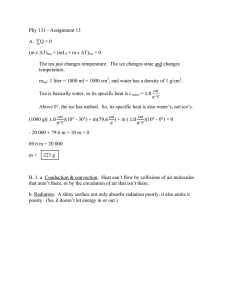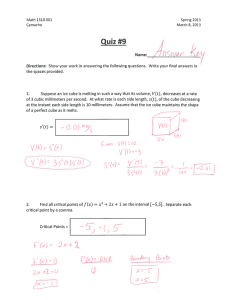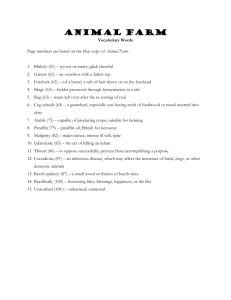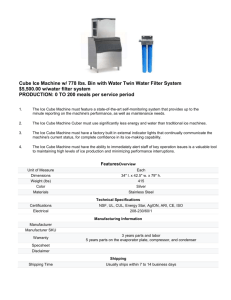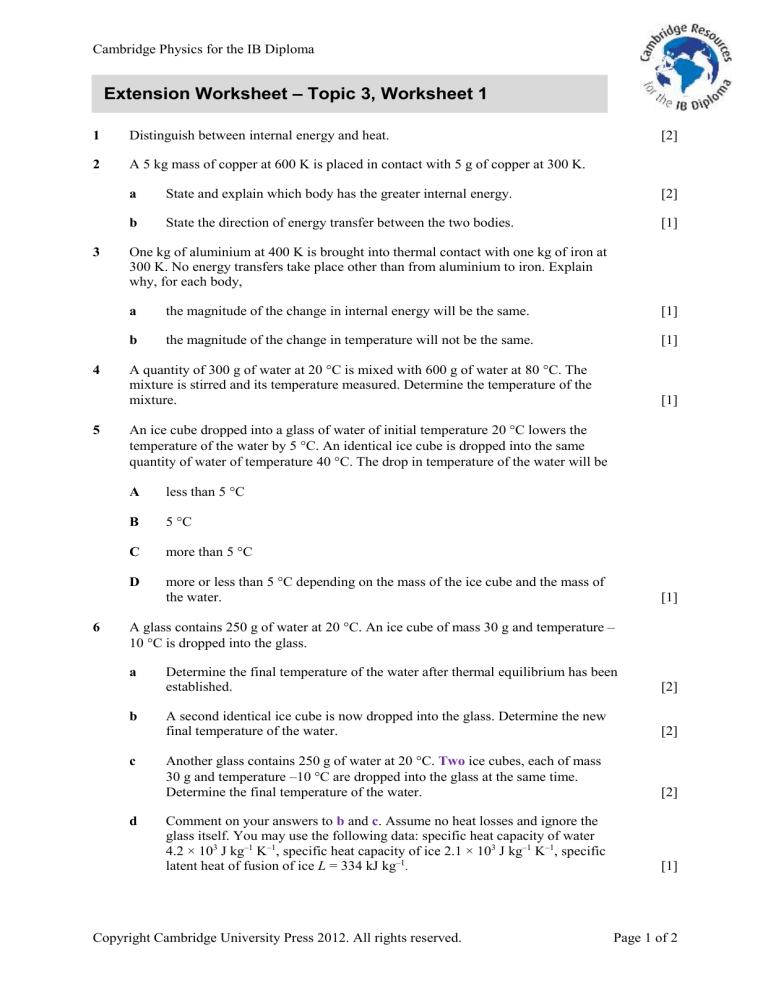
Cambridge Physics for the IB Diploma
Extension Worksheet – Topic 3, Worksheet 1
1
Distinguish between internal energy and heat.
2
A 5 kg mass of copper at 600 K is placed in contact with 5 g of copper at 300 K.
3
4
5
6
[2]
a
State and explain which body has the greater internal energy.
[2]
b
State the direction of energy transfer between the two bodies.
[1]
One kg of aluminium at 400 K is brought into thermal contact with one kg of iron at
300 K. No energy transfers take place other than from aluminium to iron. Explain
why, for each body,
a
the magnitude of the change in internal energy will be the same.
[1]
b
the magnitude of the change in temperature will not be the same.
[1]
A quantity of 300 g of water at 20 C is mixed with 600 g of water at 80 C. The
mixture is stirred and its temperature measured. Determine the temperature of the
mixture.
[1]
An ice cube dropped into a glass of water of initial temperature 20 C lowers the
temperature of the water by 5 C. An identical ice cube is dropped into the same
quantity of water of temperature 40 C. The drop in temperature of the water will be
A
less than 5 C
B
5 C
C
more than 5 C
D
more or less than 5 C depending on the mass of the ice cube and the mass of
the water.
[1]
A glass contains 250 g of water at 20 C. An ice cube of mass 30 g and temperature –
10 C is dropped into the glass.
a
b
c
d
Determine the final temperature of the water after thermal equilibrium has been
established.
[2]
A second identical ice cube is now dropped into the glass. Determine the new
final temperature of the water.
[2]
Another glass contains 250 g of water at 20 C. Two ice cubes, each of mass
30 g and temperature –10 C are dropped into the glass at the same time.
Determine the final temperature of the water.
[2]
Comment on your answers to b and c. Assume no heat losses and ignore the
glass itself. You may use the following data: specific heat capacity of water
4.2 × 103 J kg–1 K–1, specific heat capacity of ice 2.1 × 103 J kg–1 K–1, specific
latent heat of fusion of ice L = 334 kJ kg–1.
[1]
Copyright Cambridge University Press 2012. All rights reserved.
Page 1 of 2
Cambridge Physics for the IB Diploma
7
Energy is constantly being supplied to a liquid while it boils yet the temperature of the
liquid remains constant. Explain this observation.
[2]
8
Explain why the temperature of a liquid decreases during evaporation.
[2]
A sample of 120 g of solid paraffin initially at 20 C is being heated by a heater of
constant power. The specific heat capacity of solid paraffin is 2500 J kg–1 K–1. The
temperature of paraffin varies with time as shown.
9
Use the graph to determine
10
a
the power of the heater
[2]
b
the melting temperature of paraffin
[1]
c
the specific latent heat of fusion of paraffin
[2]
d
the specific heat capacity of paraffin in the liquid phase
[2]
e
Explain why the temperature of paraffin stays constant during melting.
[2]
A piece of tungsten of mass 150 g is placed over a flame for some time. The metal is
then quickly transferred to a well-insulated aluminium calorimeter of mass 120 g
containing 300 g of water at 22 C. After some time the temperature of the water
reaches a maximum value of 52 C.
a
b
Calculate the temperature of the flame. You may use: specific heat capacity of
water 4.2 × 103 J kg–1 K–1, for tungsten 1.3 × 102 J kg–1 K–1 and for aluminium
9.1 × 102 J kg–1 K–1.
[3]
State and explain whether the actual flame temperature is higher or lower than
your answer to a.
[2]
Copyright Cambridge University Press 2012. All rights reserved.
Page 2 of 2

